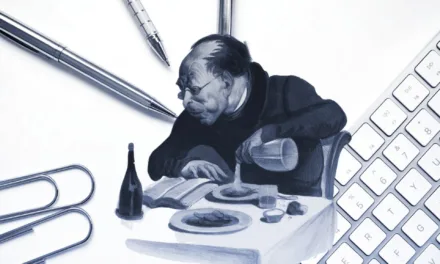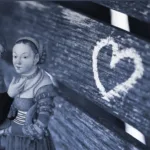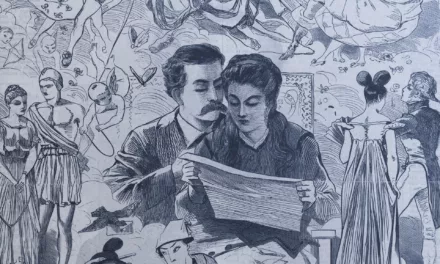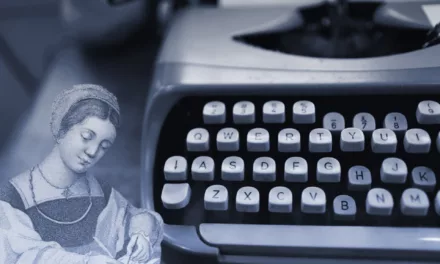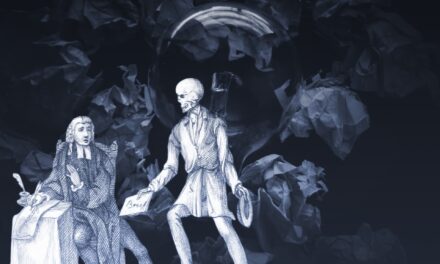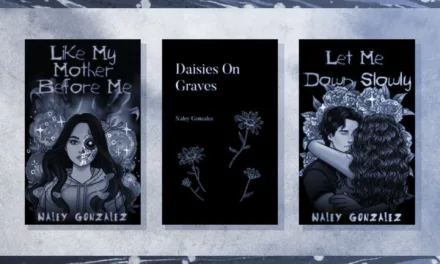
How do you write hopelessness and a crisis of self?

“I’ve been stumped trying to figure out how to write my MC realizing and overcoming his identity issues.
My MC comes from a place where he had to constantly hide his true self and intentions to survive. He was forced to play a pawn for many people and learned how to read in between lines just to live another day. He then travels to another universe by accident, and meets himself. But it’s a version of him who’s completely unbothered by the tragedies and situations that he went through. He grows as a person with his innocent help.
My goal is to portray a feeling of hopelessness for himself as he questions who he is. I want him to start rediscovering his hobbies, learning how to set goals and what he actually wants, but i struggle with showing the symptoms of his identity crisis and ways to overcome it. “
There’s quite a bit to unpack from this question, but I ultimately read it as asking for help to portray a character’s crisis and development through his journey of growth.
I have bad news, good news, and better news for this.
The bad news is, if you don’t know how to write this for your character, you don’t know your character well enough. Yet.
But based on the details you do have, the good news is you already have a solid start to resolving the issue with character development. You have a backstory portraying who he is at the start of the story, as well as the means of a positive character arc for your character to experience.
The better news: While writing, your main character is the heart of your story; and learning more about him not only helps develop more details, but it also involves looking into other areas of your writing that can improve your story, too. Thus accomplishing multiple things at once!
Ultimately, resolving your situation boils down to three things:
- Confirming your story’s theme and its “why”
- Confirming your character’s arc
- Confirming your character’s GMC (goals, motivation, and conflict)
Because, in order to know how to portray hopelessness for your character during his character arc, we need full details of who he is before the arc, after the arc, and–most importantly–what his hopes and fears are in that journey.
My goal is to make this process streamlined, but still give you space to explore. Character development can get real deep real fast, so watch for drowning in the details. We just need to find and solidify the purpose of the character and his journey for the sake of knowing how to find his version of hopelessness.
Starting with the first step!
Confirming your story’s theme and its “why”
In a previous post I wrote, about getting started with writing, I mentioned how to determine your “why” behind writing and how to tie it with a theme.
One example was writing a story about a sports tournament where a character pushes to win and refuses to give up, stemming from a personal experience about winning a tournament, even though they were ready to quit. This creates the theme of “with effort comes reward.”
Now, based on the details provided in the question, your character is one who must hide his true identity to survive because of tragic situations, and now, he undergoes a journey of learning himself again. This suggests a theme of rediscovery.
So, while we actually have the theme already, we need to ask “why” to secure the foundational details behind the theme and character. Below are some questions to help:
- Why are you writing about a character rediscovering themself?
- What message do you want to share about rediscovering one’s self?
- Is this an experience from your own life? If so, what was it like? What did you learn from it? Is that part of why you’re writing about rediscovery?
For writing rediscovery, maybe you had a life event where you had to start things over (i.e. new career, relationship, etc.). And now, you’re using those moments to write a similar story. But why? To convey that discovering one’s self is possible? That people can change? That second chances exist?
Essentially, what about rediscovery are you trying to tell in your story?
Because, guess what? That message you’re telling is the lesson your character must learn through their character arc. That’s the magic of using theme and storytelling together.
So if, for example, this is a message about second chances, your character could grow by learning he can have a second chance for himself. That becomes your starting point for developing your character.

Confirming your character’s arc
Fun fact: determining your theme is the bulk behind developing your character.
Once you have your theme in mind, you can next determine the type of character arc that will fit that theme best. For example, if you have a message that acts as a warning (i.e. lacking morality leads to downfall), you might look toward a negative arc with a tragic ending.
For the sake of this question’s parameters, we’ll keep focus on a positive character arc for the main character–though you can find more information about character arcs here.
A positive character arc involves growth in learning something of value, like a universal lesson. This can be anything from the power of love and friendship, to letting go of the past. Also, since the character undergoes a positive change from having one belief to another, who he is at the end of the story will almost completely contrast with who he is at the start. These are like “before and after” snapshots of your character that act as puzzle pieces for plotting in arc details.
For example, if your theme is “love wins,” your character must be someone who learns that by the end of the story. That means the story starts with them as someone who doesn’t believe in that message at all. And just like that, you have a start and end point of your story and character’s journey!
Using the details from the posted question, and the theme of rediscovery, we already have these “snapshots” of the character at the beginning and end. The character starts the story as someone who learned to hide who he is to survive, while looking for hidden meanings/ulterior motives in everything someone says or does. And the story ends with him learning how to overcome those habits, discover who he is through new hobbies, and heal from past trauma.
Ultimately, the type of character arc you have to showcase your theme determines the start and end point of your story and character’s journey. Your theme is the idea for the story, and the character arc is the starting blueprint. This is why we brainstormed the “why” behind your writing and story first.
Confirming your character’s GMC
Goal, motivation, and conflict are crucial for character development and storytelling. I’ll discuss them strictly from an internal plot/character arc perspective for the sake of the question asked, so if you want a full dive into learning GMC, I recommend this post here.
From an internal plot point of view, GMC gives you a roadmap to plot your character’s arc with a simple summary: (Character) wants (goal) because (motivation). However (conflict), so (resolution).
Let’s use Harry Potter and the Sorcerer’s Stone as an example. The story involves themes of friendship and love–belonging and self-worth, to be specific. Thus, Harry’s positive character arc starts the story opposite of the theme learned (living with his relatives where he doesn’t feel love or belonging), and ending with facing Voldemort (learning self-worth) and finding valuable friendship with Ron and Hermoine (love and belonging).
This is identifying the theme and character arc just like we discussed in the first two steps. Now, let’s put those details through the GMC method: Harry wants to feel he belongs somewhere (goal) because he lost his parents while young and feels different living in the muggle world (motivation). However, a dark wizard seeking the Philosopher’s Stone threatens his growth by affecting the safety of his new world and friends (conflict), so Harry must stop him to keep his friends safe while rising to his potential as the Boy Who Lived (resolution).
See how everything comes together to solidify the details of a character’s journey?
Going over the character arc also touches on the concept of a character’s want vs. need in the story. Harry wanted to go to Hogwarts and become a wizard (external plot), but he actually needed to find his new sense of belonging and worth (character arc). Think of it as learning the theme the wrong way vs. the right way.
Let’s try the GMC method with your main character in question, and his theme of rediscovery, by asking:
- Your character starts the story stuck living in past trauma and hiding himself from others. What does he want to change about his current way of life?
- What does he want as change, vs. what he needs for change to happen? What’s the wrong and right way to learn the theme?
- Why does he want to change? What motivates him enough to change his life from his current status quo?
- What internal belief gets in the way, in conflict with what he wants, and how must he overcome it?
Sticking with the concept of second chances from the previous step: Maybe the character feels empty and doesn’t want to “simply survive” anymore (goal). He sees other people happily living as themselves and wants the same (motivation). Perhaps he wants to handle an external threat he believes keeps him stuck in “survival mode.” However, what keeps him stuck is actually his misled belief that he’s unworthy of second chances in life (conflict). So, he must reframe that mindset (through new hobbies, etc.) to find what he really needs for himself: safety and discovering his true identity (resolution).
Just like that! You have a character arc from beginning to end to use as your character’s journey in the story!
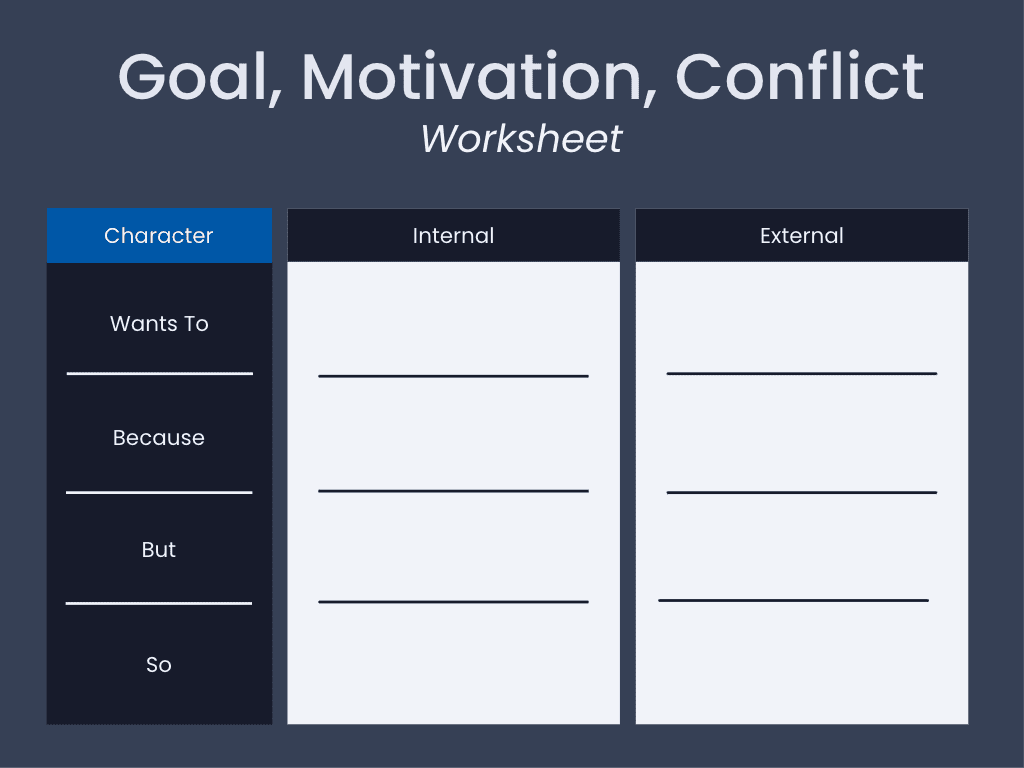
Putting it all together
So, why did I go from big-picture to small about storytelling and character arcs to explain writing hopelessness?
Because planning out a character’s journey like this gives deep insight into their hopes and dreams. And once we know those, we can flip them upside down to learn their biggest fears.
Hopelessness looks different for everyone, depending on their situation and beliefs. And it takes knowing a character’s core journey to determine what their version of hopelessness looks like, why it looks that way, and how it comes up during external events.
All of this work was to have groundwork for a character’s aspiration. Here, we used the theme of rediscovery to create an example character’s goal and motive behind wanting a second chance in life–to achieve safety in knowing themselves.
Now flip it. The opposite of the dream to achieve safety and discovering self is the fear of staying stuck in survival mode and feeling empty.
That right there is what hopelessness looks like for the character: forever stuck in survival mode, unsafe, threatened, and a shell of themself to never discover who they really are.
Knowing that core fear is vital. Because once you identify it, you can describe it and the emotion portrayed in certain situations. Then you can use it to add personality and/or backstory details to your character if you don’t have them already (what does a person who yearns for safety and security act like?).
After all, personality and backstory for a character are just the flavor behind one’s core actions. It’s like baking a cake. You need the foundational ingredients before you can add personality and flavor.
When depicting this core fear, imagine a scene where your character tries everything to achieve their dream and utterly fails. How does that affect them? What does that outcome feel and look like to them? How do they react to that loss? Is it anger? Grief? What does this force them to believe about themselves and/or the world? Does this lead to bad habits?
This last part here is a little more based on intuition and personal brainstorming to develop your character, since every story, plot, and character are different. But this step-by-step process should provide the groundwork for solid character arcs that give insight into who your character is at their core, and what their core emotions–like hopelessness–would look like based on specific scenarios.
Character development is my favorite to experience as a reader, my favorite exercise as a writer, and one of the best ways for an audience to connect with your writing. So have fun with it! And always stay open-minded. Your story and character(s) will give you the insight you need when you let yourself think outside the box.
Happy writing!

